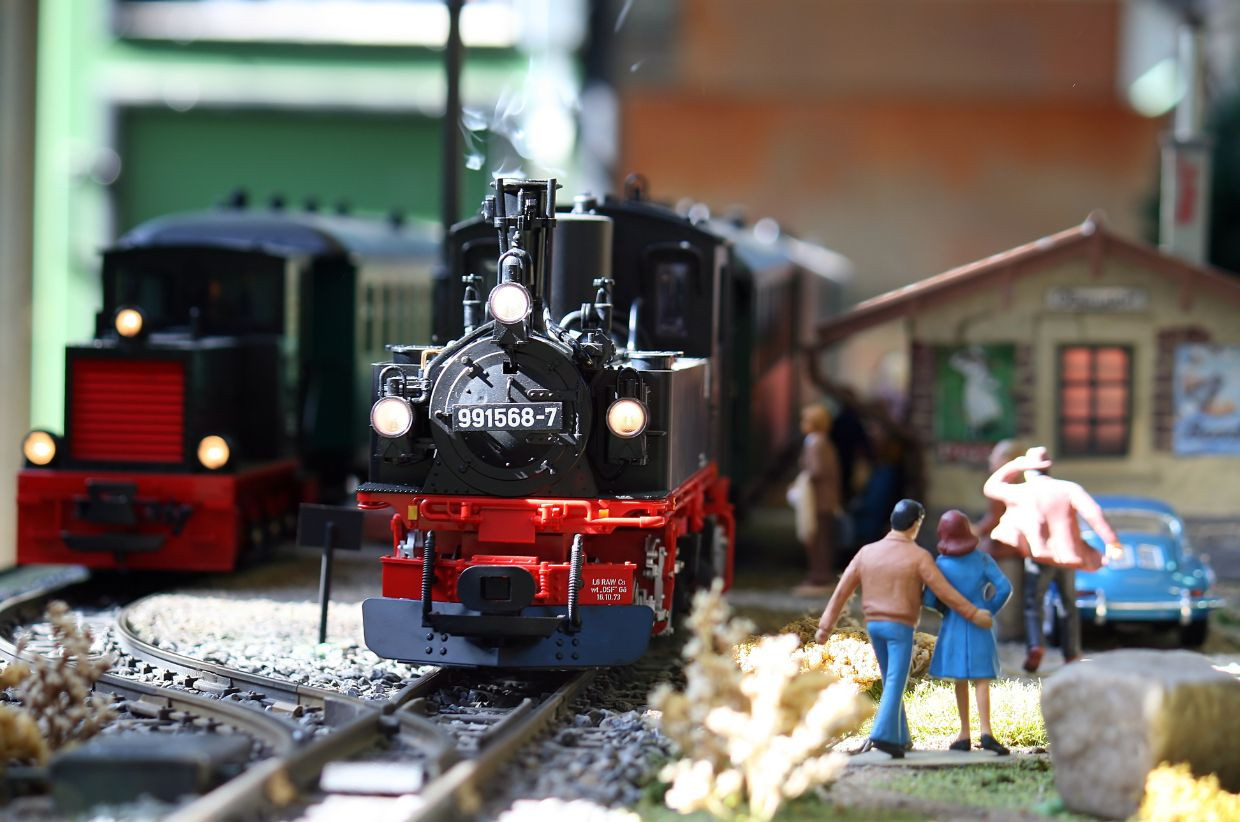A Quick Guide to Weathering Model Locomotives
Pre-painted model trains have come a long way since companies first started releasing them. However, using model trains right out of the box can look a bit strange. After all, real trains rarely have perfect paint jobs.
To add another dimension of realism to your model railroad, you should consider weathering your trains. Check out our quick guide to weathering model locomotives below.
What Is Weathering?
In the world of model and miniature painting, weathering is a technique in which you add paint effects that make your project look like a real object that has seen wear and tear. Some types of weathering include:
- Rust
- Burns and scorch marks
- Oil stains
- Paint color variation from repairs
In this post, we’ll focus on the first two types of weathering, since they’re the most common and the most challenging.
Adding a Fade Coat
Before you start adding rust or scorch marks, you’ll want to dull the overall look of the train with a fade coat. You can apply a fade coat with an airbrush or a regular paintbrush. All you have to do is create a wash with about ten percent white or light gray pigment.
Apply the wash all over the main body of the train, as well as any smaller painted parts. With the fade coat applied, your weathering effects will stick better.
Creating Rust and Burn Marks
Now it’s time to start applying weathering effects, and there are several ways to do this. If you’re looking for a quick solution, some miniature paint companies create pre-mixed rust effects that you can paint onto your models. However, you won’t have as much control over the finished look.
For a more realistic application, we recommend using either oil or watercolor paints. You don’t need the most expensive brand, but we do suggest buying professional artist quality for a satisfying result. Dilute your paints with either solvent (for oil) or water (for watercolor) and apply the effects in very small strokes with either a sponge or a fine detail brush.
Tips for Precise Application
If you’re not sure what weathering effects should look like, it’s a good idea to find some reference images to use as a guide. For small scales, like Atlas N scale locomotives, you may find it helpful to use a standing magnifying glass so you can see exactly what you’re doing. Weathering small-scale trains is challenging because you can’t scale down the texture of the paint to match your model.
We hope this quick guide to weathering model locomotives helps you get the look you want for your model railroad. And if you’re looking for a new locomotive to practice on, check out our selection at Midwest Model Railroad. We have one of the largest in-store and online collections of train cars, painting supplies, and track construction tools in the world.
Recent Posts
-
Prototype Spotlight: GE ES44AC — Modeling a Modern Freight Workhorse
Prototype Spotlight: GE ES44AC — Modeling a Modern Freight Workhorse Published 2025-09-29• 8–10 min
-
How to Build a Realistic Freight Yard: Flow, Trackwork, and Car Management
How to Build a Realistic Freight Yard: Flow, Trackwork, and Car Management Published 2025-09-25 • 8
-
Scenery Basics: From Foam to Foliage — A Quick, Budget-Friendly Guide | Midwest Model Railroad
Modeling Tutorial Scenery Basics: From Foam to Foliage Published 2025-09-23 · 7–9 minute read Li




